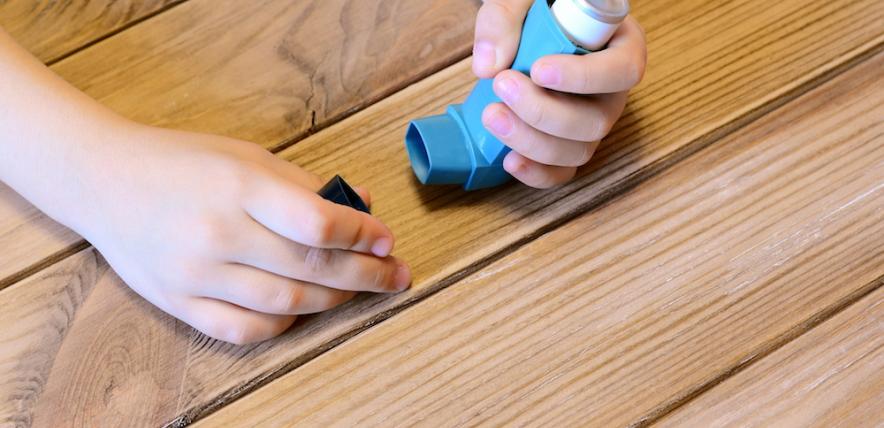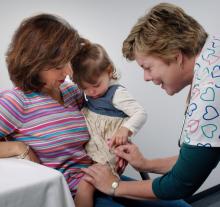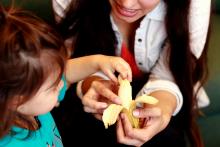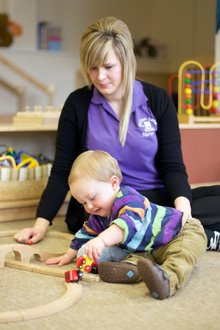May 7 is World Asthma Day and aims to raise awareness and support for those who have this condition, and their carers
Asthma is a common and long-term condition of the lungs, which affects about 5 million people in the UK.
It often starts in childhood.
There is no cure for asthma but with the right treatment plan the symptoms can be managed so that it shouldn't have too much impact on the person's life.
What are the symptoms of asthma?
If you’ve noticed your baby or young child wheezing (when a whistling sound occurs as they breathe), being breathless or coughing a lot in the morning or at night — or even coughing constantly — it’s possible they might have asthma.
A cough that keeps going and coming back may also be an indicator of asthma.
Asthma UK has this useful guide to monitoring and recording symptoms ahead of your appointment with the GP
Asthma is difficult to diagnose in Under-5s because the breathing tests aren’t suitable for young children.
Doctors will first look at your family history, and they might give your child a treatment to trial to see whether they feel better.
In such cases, doctors often ask parents to watch and wait, and try to establish symptoms and how long these go on.
Often, a GP will prescribe a reliever inhaler for your child to take when they do get symptoms. This will allow your GP to see if symptoms come back, and if they follow any pattern.
If your child is given a reliever inhaler — which opens up the airways, making breathing easier — they should haven it with them at all times, so make sure you give one to whoever is looking after your child and that it is clearly labelled.
All of this can be a frustrating time for parents as the symptoms of asthma can also naturally come and go.
However, while you’re waiting for a diagnosis you can take steps to alleviate their symptoms by understanding what asthma is and what causes it.
What are the causes of asthma?
Experts are not sure what causes it but people with asthma have very sensitive airways that become inflamed and tighten when they breathe in anything that irritates them.
This can then cause their chest to become tight, and result in wheezing and difficulty breathing.
Asthma often develops in childhood, and many youngsters grow out of it when they are teenagers only to see it come back later in life.
Asthma associated with allergy usually starts in children.
What are the triggers for asthma?
The condition can be triggered by illness, such as the common cold, allergies to pollen or animal fur, irritants such as tobacco or spray cleaners, and air pollution.
Some people also get an attack from heightened emotions, or from doing exercise – for example, running in cold weather.
How is asthma treated?
Treating children suspected of having asthma is often done using a method called ‘trial of treatment’ which last eight weeks.
Your doctor may prescribe medicine your child takes during this time to see if symptoms improve. If they do, the GP will suggest stopping treatment to see if they come back. If the symptoms do return, then it is likely your child has asthma.
The doctor will advise the treatment to continue until the child is old enough for asthma tests. The doses of medicines prescribed will be the lowest possible to control your child’s symptoms and are unlikely to cause any side effects.
If a doctor suspects the asthma is severe, your child will be referred to a specialist.
Is there anything else I could be doing to help?
- When going through the process of diagnosis it is important that you work with doctors by attending all appointments so that your child's progress and medicines can be constantly reviewed.
- You can also track their symptoms to help doctors build up a picture of their asthma and what might have triggered an attack.
- Get into a routine of medicine-taking and make sure you give the right treatment at the stated times. Make sure your child isn’t missing doses.
- If in doubt ask your medical team to show you and your child how to use inhalers and spacers correctly, as failing to get the right dose can affect how they react.
- It is best to supervise your child when using their inhalers to ensure they’re using them in the right way.
- Get a written asthma plan which charts your child treatment and responses, which you can share with family members, so everyone understands that your child is being treated, even if they don’t yet have a formal diagnosis.
How do I know if my child is having an asthma attack?
The idea of your child having an asthma attack is terrifying.
But if you make preparations in advance, know what to look out for and what to do should one occur, this will make you feel safer and more importantly, could save your child's life.
Preparations (from Asthma UK)
1. Print off Asthma UK's advice on what to do in the case of an asthma attack and keep it somewhere visible in your home or save it onto your phone.
2. Keep their blue inhaler handy at home, keep one in the car and one at their nursery/childminder/primary school.
3. Always keep the inhaler in the same place so you'll never have to search for it in a panic.
4. Help your child use their inhaler — they can be tricky for young children to master.
5. Attend all doctors appointments if you're waiting for a diagnosis and always take the inhaler with you so it can be checked.
6. Share your child's asthma action plan with anyone looking after your child so they know what to do.
Spotting the signs of an asthma attack (from Asthma UK)
Signs that your child is having an asthma attack are:
- Their reliever inhaler (usually blue) isn’t helping, and/or
- They can’t talk or walk easily and/or
- They’re breathing hard and fast and/or
- They’re coughing or wheezing a lot and/or
- They complain of a tummy ache and/or chest ache
The four simple steps to take now
These steps could save your child’s life so make sure you know them – and share them with other people who look after your child, too.
- Help them to sit up straight and stay calm
- Help them take a puff of their reliever inhaler (usually blue) every 30-60 seconds, up to a maximum of 10 puffs
- Call 999 for an ambulance if:
- their symptoms get worse while they’re using their inhaler
- they don’t feel better after 10 puffs
- you’re worried at any time, even if they haven’t yet taken 10 puffs.
4. While you wait for the ambulance, reassure your child. Repeat step 2 if the ambulance takes longer than 15 minutes.
Always call 999 immediately if you don’t have a reliever inhaler with you.
If you go to A&E, remember to take your child's written asthma plan with you – even if it’s a photo on your phone.
If you don’t need to call 999 because your child’s symptoms improved after using their inhaler, you need to make an urgent same-day GP appointment.
Remember: you’re not wasting anyone’s time
Not sure whether your child really needs emergency help? It’s always better to be safe, so don’t risk having to look back and wish you’d got urgent treatment for your child.
Further reading:
Blf.org.uk/support-for-you/asthma/what-is-asthma
This article was written for the Early Years Alliance by Dorothy Lepowska-Hudson and is for information purposes only. To get a diagnosis for you or your family, you should always consult a medical professional.
If your child is ever struggling to breathe you should call 999.
Where next?
How to choose the right childcare
What is hand foot and mouth disease and is it dangerous?







